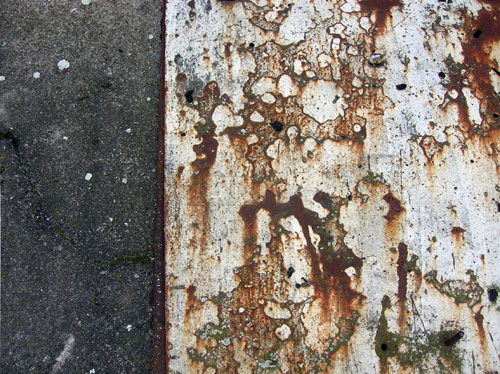
Ghosts along a border by Pierce Warnecke | 10:48
Somewhere along the edge
Pierce Warnecke, 2012
A border is a strange thing. It sometimes follows a naturally occurring break in the landscape, like a river, canyon or body of water, but often times just cuts arbitrarily through a geographic location. Borders are in constant flux, appearing and disappearing, and once they’re gone it’s as if they were never there. It exists to mark a limit and to decide whether or not something is worthy of passage. This works for most things, but not for air. If air passes then so does sound, which means that sounds could care less about borders.
I walked along an old border, almost forgotten. Today it divides nothing. Children play on it, dogs run around it and cars drive through it without slowing down. Interesting to watch but sound-wise, nothing that conveyed the impression of a division. I began to feel there would be no way to capture it sonically because it is gone. But since this border is gone-dead in a sense- would it not have a ghost? We believe in human ghosts because humans are supposed to have spirits. But if we refer to popular cinema culture then animals, cars, ships and buildings have ghosts, too. Well then, I must insist- a border has to have a ghost.
This idea of using sound to capture ghosts has been and continues to be explored, as both an actual ghost-hunting method and as a metaphor in sound art. Recently in a collaborative project with Rinus Van Alebeek, in which we were to record sounds at night, he stated he tried to ‘capture the Ghost’ of a well known and newly destroyed building in a capital city. Also, a very nice text by Scanner speaks of parallels between ghosts, memory and field recording in his personal creative process.
What’s important is not the discussion of whether or not ghosts exist, what’s important is stating what a ghost is: a memory. Something from the past that resurfaces at a later point in time, and yet is somehow passive and isolated from the contemporary world in which it finds itself projected. And that is precisely what a recording is.
Obviously night is when ghosts come out. Daytime sounds- like engines and discussions- don’t care about the border, and once they have gone to bed the other, older sounds can be heard. In Lars Von Trier’s TV show ‘Riget’, a character decides to contact a dead girl haunting the hospital. At one point she goes to the room where they test people’s hearing. She asks the doctor there to ‘amplify the silence’. By a series of fictional amplifications and filters she isolates the ghost’s voice rasping something scary, I don’t remember what-but she found her ghost.
In order to find the sound of this border I also made a series of filters and amplifications on my recordings. The idea was to look for sounds where there were none apparent. If the original sound contained low frequencies, I cut them and amplified the highs to see what was hidden in there. If the sound had higher frequencies, I did the opposite. The obvious answer to this is that I would only end up with the noise of my pre-amps. So I recorded with various portable recording devices, both analog and digital, and proceeded to search through them for the ghost(s) of the border.
Here is what I found.